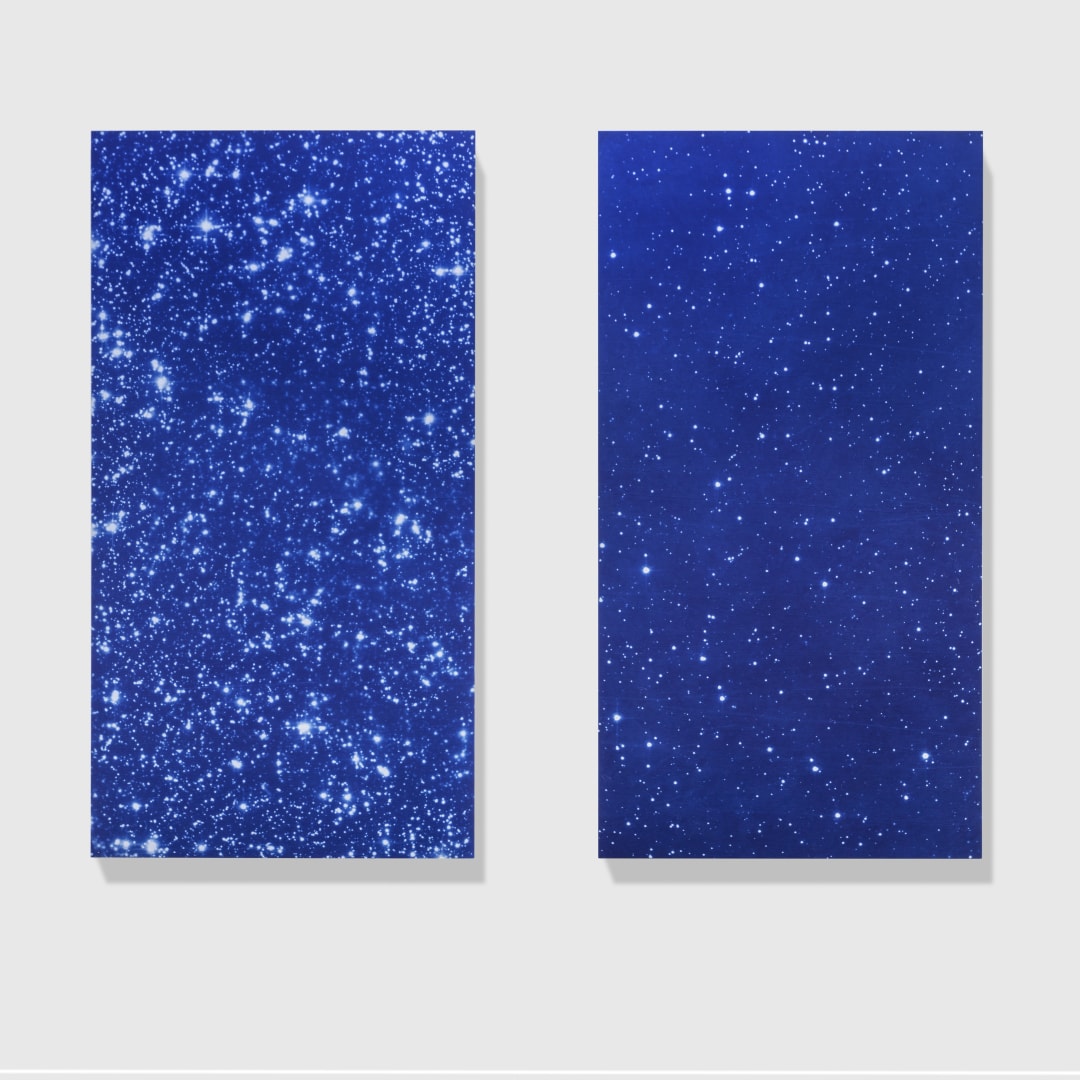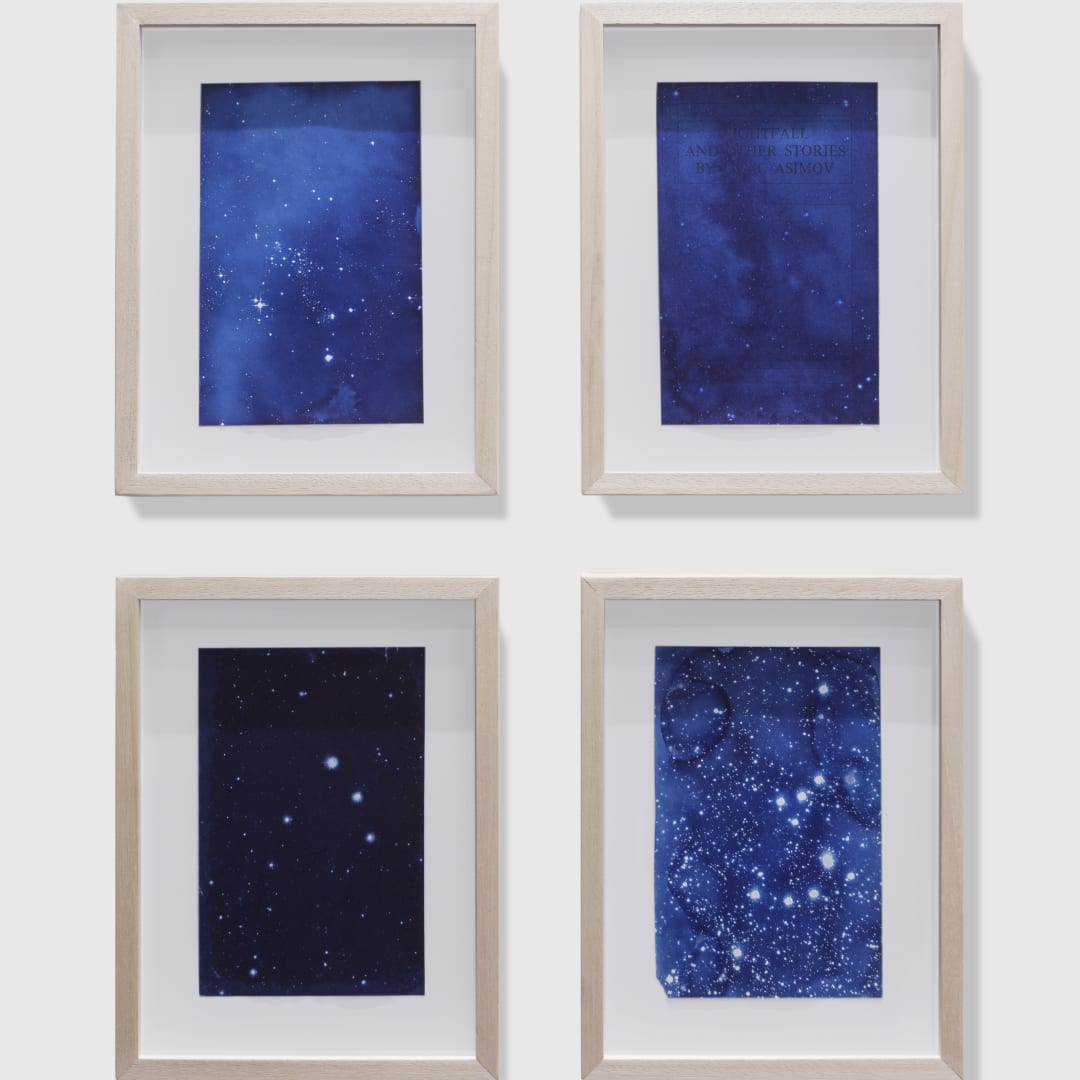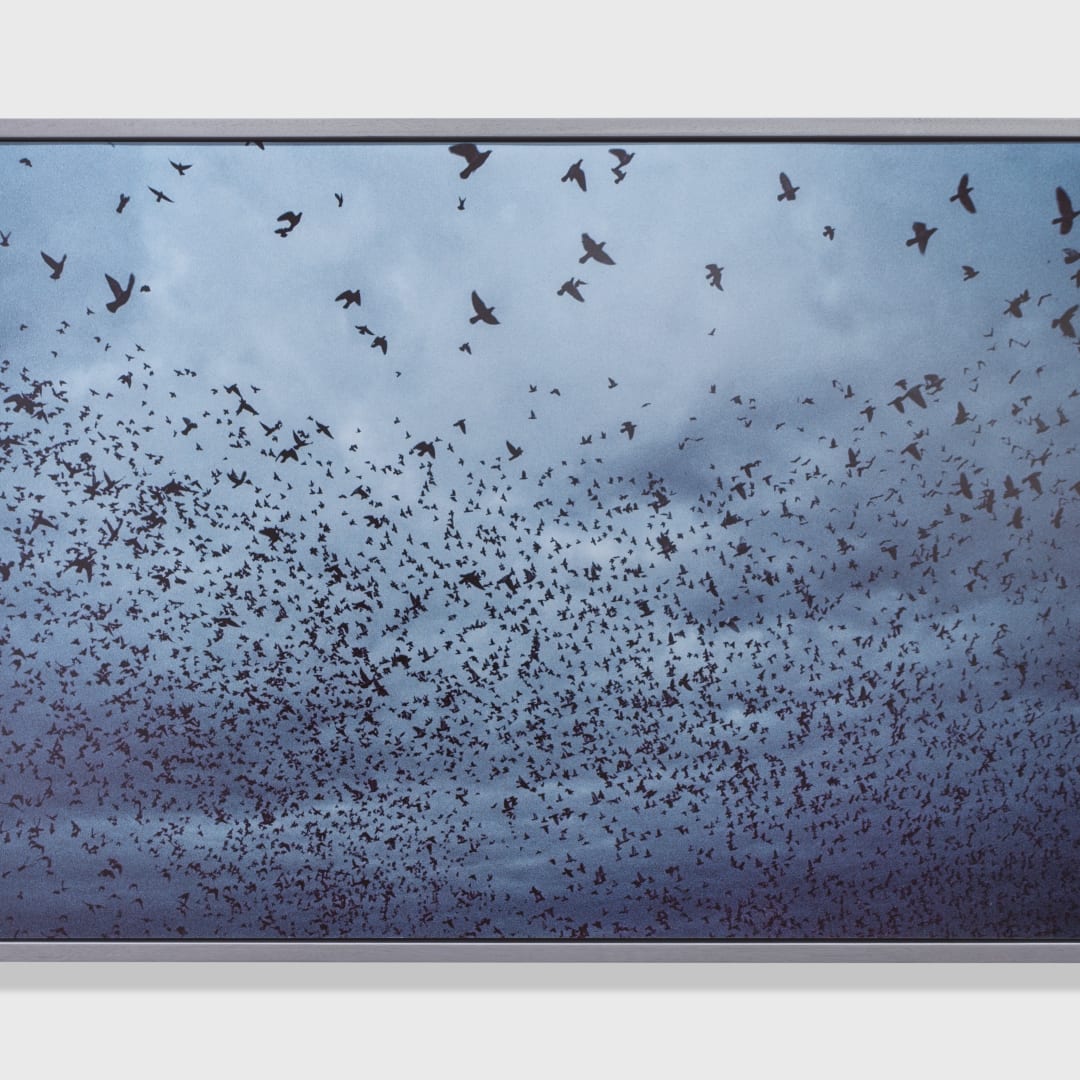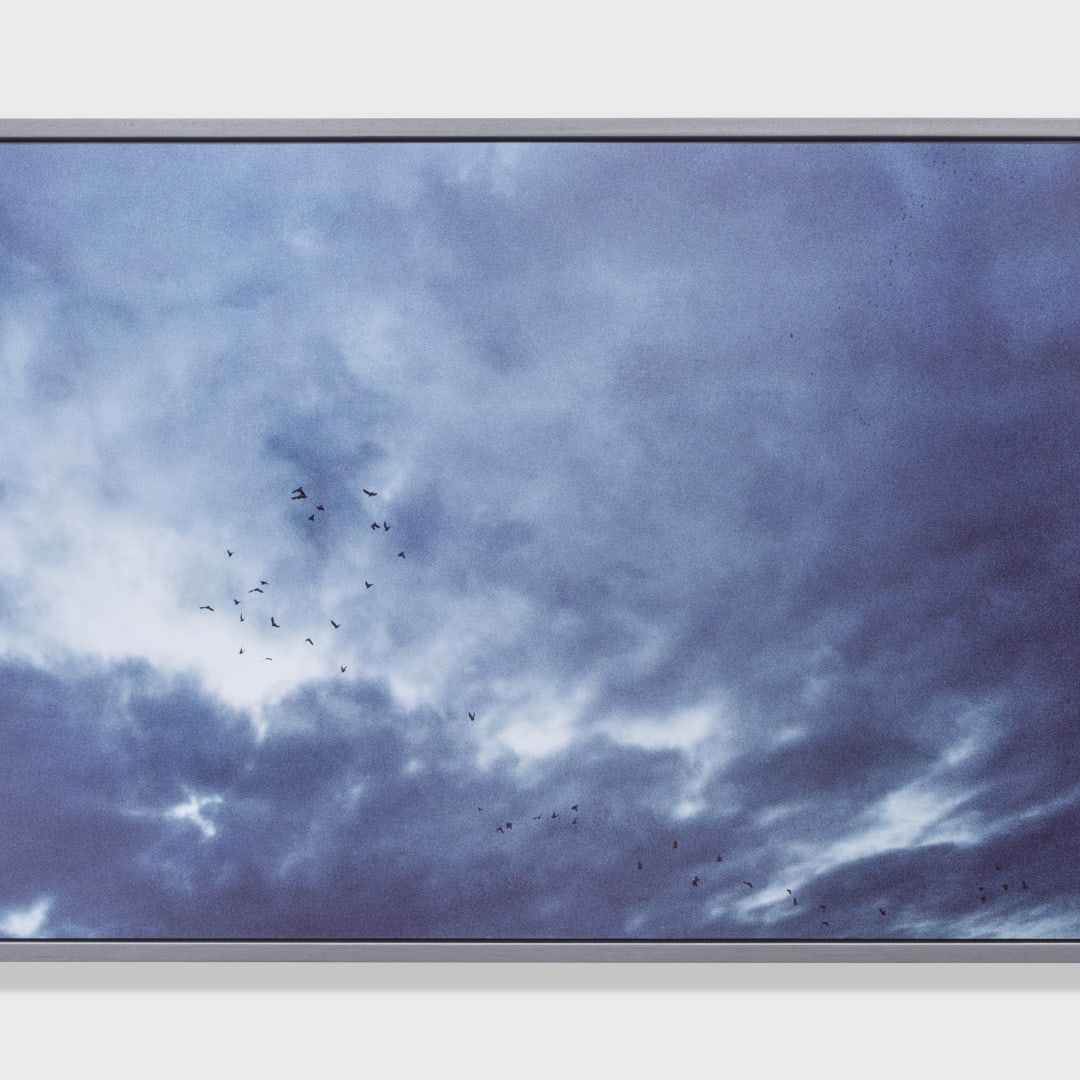The Third Line participates in the 12th edition of Art Dubai with a group presentation of works by Ala Ebtekar, Monir Shahroudy Farmanfarmaian, Sahand Hesamiyan and Zineb Sedira. The booth showcases the artists’ interest in nomadism, geometry and architecture to consider new possibilities of travel: to other countries, to the stars, towards utopia.
There are allusions to other worlds in the work of Ala Ebtekar, who draws references from history, Persian mythology, science, and philosophy. His multiaxial practice incorporates an array of media from 19th century cyanotypes, to installation, photography, and sculpture, yet the artist continually returns to his initial passions of drawing and painting. Ala’s Nightfall series includes found pages from the Isaac Asimov story after which it is named but here, the words are cut away. Its patterns of negative space suggest clouds, auroras, and portals to celestial dimensions. On a larger scale, the painted cosmos of Ala’s Azimuth works further invoke a cosmic plane in the pinpricks of faraway stars, as captured by the NASA/ESA Hubble Space Telescope. Rather than being painted on by the artist’s hand, however, both series involve a technique of exposing cyanotype to either the sun or starlight to activate its photochemical surface. Past and present collide to draw attention to the manmade construction of the universe.
Sometimes these elements are distilled down to the purity of the line, as in Monir Shahroudy Farmanfarmaian’s new drawings. Shown here for the first time, they reinterpret the aineh kari technique of the characteristic geometric mirrored mosaics Monir is best known for. Dating back to the 16th century Safavid era in what is now Iran, the technique involves first drawing a pattern on paper, perforating it, positioning it on the wall, and spraying over it to transfer the design to the wall before cutting and affixing mirror shards in place. The intricately layered coloured lines of the felt tip drawings invoke the architectural forms of nomadic tents and minarets, while the addition of glitter nods to the brilliantine reflections of its inspiration.
Islamic geometry is similarly important in Sahand Hesamiyan’s cutouts and delicate sculptures, which base their elongated shape on Sufi domes. Like Monir, he incorporates the shapes, adornment techniques and geometry of Islamic architecture, utlilising light as an architectural ornament to create abstracted interactive objects executed in stainless steel. In particular, the sculpture reinterprets the traditional honeycombed form of muqarnas, most often found decorating the undersides of domes. The Farsi name of the work, Majaz, refers to an inexplicable sensation, with connotations of the metaphorical and the unreal. Science, geometry, and the abstracted nature of spirituality come together to gesture towards the possibility of utopia.
Zineb Sedira will have a retrospective at the Sharjah Art Foundation opening March 16th, and takes up these broader themes in a selection of light boxes accompanied by a series of photos. Specks in the sky reveal themselves to be flocks of migrating carrier pigeons, which Zineb tracked using an analogue camera. The cinematography is tender, and the images beautifully grainy. There’s a different kind of circular geometry at play here, in their directional motions, linear navigations, and always, a circling back to their origins. From the time of the Ancient Egyptians pigeons have been valued for their homing navigatation: during the world wars, some birds even received medals for their service in carrying critical military dispatches. There’s a certain poetic parallel to the immigrant in these birds’ ability to communicate over long distances, and the way they overcome all obstacles in their paths, crossing deserts and seas in their determination to find their way back home. At the same time there’s a deterritorialising freedom borne of movement, intimated by the Giles Deleuze concept, Lines of Flight, which finds a parallel the series name. The works bespeak an intimate perspective of migration and displacement that uses her own experience to frame wider questions of language, transmission, memory, mobility, and the environment.









